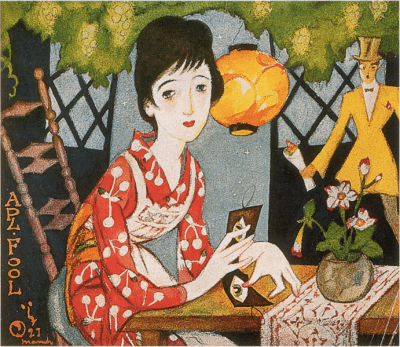Japan art and tragic life of a socialist sympathizer: The state apparatus
Lee Jay Walker
Modern Tokyo Times

Yumeji Takehisa (1884-1934) witnessed the excessive nature of the state apparatus. This concerns the Meiji Period (1868-1912), the rise of militarism in Japan, and he feared the rise of Nazism after his travels in the early 1930s. Therefore, throughout his life, Takehisa witnessed the threat of the state apparatus and how democracy was fragile.

In 1910, after a plot to assassinate the Meiji Emperor was discovered (the Kōtoku Incident), Takehisa was questioned for several days. He was exonerated, unlike some individuals he knew. Hence, despite always having socialist leanings, Takehisa decreased his political involvement and focused fully on art.

The execution of his friend, Shusui Kotoku (1871 – 1911), who played an important role in the socialist and anarchist movements of the day, always remained in his soul. Thus Takehisa – who struggled against poverty during the infancy of his artistic career – felt warmth to the socialist cause and the downtrodden working classes.

In the realm of art, the British Museum says, “Yumeji was very influential on Japanese graphics, illustration and popular literature from 1909 onwards, when he published his first collection. His melancholic, poetic view of life, his ideals of the independence of the artist, and his own Bohemian and tragic lifestyle endeared him to many of his generation, including rather surprisingly Onchi Koshiro; and his effects on both ‘Shin Hanga’ and ‘Sosaku Hanga’ were considerable, as well as on graphic design and literary illustration in general.”

Vincent van Gogh – after shooting himself – famously said, “The sadness will last forever.” In a sense, the same can be said about the ambitions and ideals of Takehisa – and the literal pain he felt during the late stages of his life. Therefore, not making the artistic impact he dreamed about, witnessing the growth of militarism in Japan and Nazism in Germany, and dying of pain after entering a sanatorium – and his chaotic love life – meant that “The sadness will last forever” for Takehisa.

Takehisa also felt the economic convulsions of the Great Kanto Earthquake that killed over 100,000 people. This brutal earthquake happened in 1923. Ethnic massacres also ensued against the Korean population. Hence, many Koreans were killed in the environs of Tokyo and Yokohama. Indeed, Chinese, Ryukyuns, and Japanese with dialects far from Tokyo and Yokohama were also brutally killed. Therefore, for Takehisa and his socialist leanings – one can only imagine how this impacted his soul – just like witnessing Nazism in Europe in the early 1930s shortly before his death.

PLEASE DONATE TO HELP MODERN TOKYO TIMES
Modern Tokyo News is part of the Modern Tokyo Times group
DONATIONS to SUPPORT MODERN TOKYO TIMES – please pay PayPal and DONATE to sawakoart@gmail.com
http://moderntokyotimes.com Modern Tokyo Times – International News and Japan News
https://www.pinterest.co.uk/moderntokyotimes/ Modern Tokyo Times is now on PINTEREST
http://sawakoart.com – Sawako Utsumi personal website and Modern Tokyo Times artist
https://moderntokyonews.com Modern Tokyo News – Tokyo News and International News
PLEASE JOIN ON TWITTER
https://twitter.com/MTT_News Modern Tokyo Times
PLEASE JOIN ON FACEBOOK